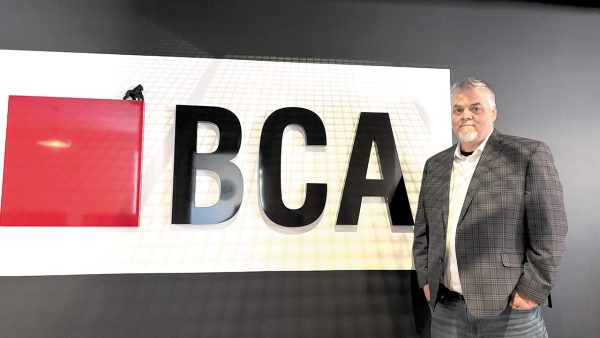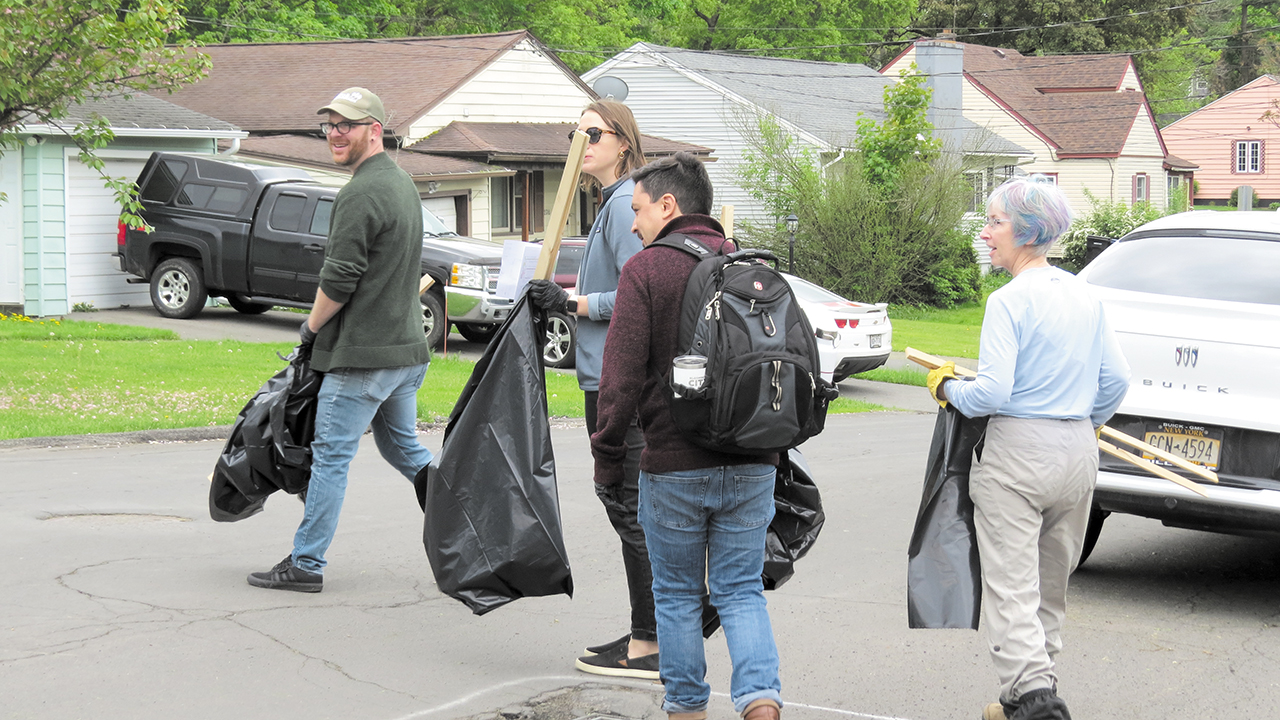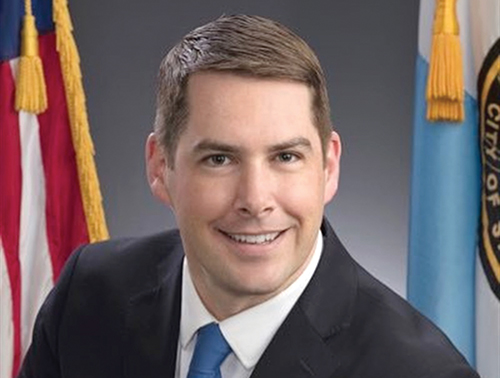Get our email updates
Stay up-to-date on the companies, people and issues that impact businesses in Syracuse, Central New York and beyond.
What's New
Upcoming Events
CNYBJ Job Board

Developer hopes to start demolition work for Onondaga Hotel later this year
SYRACUSE — The Onondaga Hotel project is on track for a tentative parking-garage demolition in late 2025, with a 24-month time frame from the groundbreaking to the opening of the facility. That’s according to an Aug. 26 email from the City of Syracuse to CNYBJ. The developer, Sun Development & Management Corporation, plans to demolish […]
Get Instant Access to This Article
Become a Central New York Business Journal subscriber and get immediate access to all of our subscriber-only content and much more.
- Critical Central New York business news and analysis updated daily.
- Immediate access to all subscriber-only content on our website.
- Get a year’s worth of the Print Edition of The Central New York Business Journal.
- Special Feature Publications such as the Book of Lists and Revitalize Greater Binghamton, Mohawk Valley, and Syracuse Magazines
Click here to purchase a paywall bypass link for this article.
SYRACUSE — The Onondaga Hotel project is on track for a tentative parking-garage demolition in late 2025, with a 24-month time frame from the groundbreaking to the opening of the facility.
That’s according to an Aug. 26 email from the City of Syracuse to CNYBJ.
The developer, Sun Development & Management Corporation, plans to demolish the Warren Street parking garage before beginning work on hotel construction.
City officials and the developer announced the project on Jan. 24 in the City of Syracuse’s office space in One Park Place at 300 S. State St.
The Syracuse Industrial Development Agency (SIDA) selected Sun Development & Management Companies — one of the largest Hilton hotel developers in the nation — to build the upcoming 240-room hotel at the corner of East Fayette Street and South Warren Street. M. Lemp Park currently occupies the site, which is just north of the South Warren Street parking garage.
“We’ve had a lot of housing development, which we know we need, but with some of the housing development, we’ve seen some hotel rooms come offline and that’s presented us with some challenges,” Syracuse Mayor Ben Walsh said to open his remarks at the project announcement.
In total, the project will result in about 330 construction jobs, 52 permanent jobs, and $87 million in new investment for downtown Syracuse, according to the city’s announcement.
“Gaining a new full-service hotel in the heart of downtown Syracuse is an indicator of the economic development progress we have all been working hard to achieve,” Merike Treier, executive director of the Downtown Committee of Syracuse, Inc. said. “The Onondaga Hotel will fulfill a critical need in the local tourism and convention sectors, support additional tourism activity, and create a new third space for our downtown residents and businesses.”
The newly constructed nine-story, Onondaga Hotel will be a part of Hilton’s Curio Collection, a high-end boutique brand that focuses on specialty, unique designs rooted in history and local culture. Hotel amenities — including the lobby lounge, restaurant, bar, ballroom, and break-out rooms for conferences and meetings will all be located on the top level — providing a roof-top view of the city and community space for residents and visitors.
“Founded in 1989, Sun Development and Management Corporation is a family company with a guiding principle to partner with communities to bring world class hospitality that local residents and businesses are proud of,” Suraj Patel, president of Sun Development and Management, said in the city’s announcement.

Eric Reinhardt/CNYBJ
Project origin
The City of Syracuse had partnered with SIDA, which issued a request for proposals for the site that it owns at the corner of East Fayette Street and South Warren Street.
Crews will build the hotel on both the SIDA property and additional land currently occupied by the “structurally compromised Warren Street Garage right next door,” Walsh said.
As a part of the project, the Sun firm will demolish the privately-owned Warren Street garage, per the city. To support the demolition of the parking garage, Syracuse will provide a $400,000 Restore New York grant, Walsh noted in his remarks.
“By repurposing this publicly owned land, working closely with our partners, we’re not only meeting the growing demand for hotel rooms and hospitality services in our city, but [also] we’re activating a new, vibrant space in the heart of downtown,” the mayor said.
Onondaga County Executive Ryan McMahon used his remarks to announce a $500,000 grant from the county’s hotel initiative, representing the largest grant the county has awarded from the program.
“I want to congratulate the City, specifically, for having the vision to go out and look at your real estate and look at how that real estate can perform as we as a community strive to become the hub for memory-technology manufacturing in North America,” McMahon told the gathering in the Burnett Executive Conference Room at One Park Place. “And that’s our goal and we’re going to achieve that goal. And to do that, you need a thriving hospitality industry.”

Bicentennial gala in Clinton Square to mark 200 years of Erie Canal and Syracuse
SYRACUSE — The Onondaga Historical Association (OHA) and the Erie Canal Museum will co-host the “Our Glorious Workplaces: Bicentennial Gala,” presented by Feldmeier Equipment on Oct. 17 from 5:30-10 p.m. in Clinton Square in downtown Syracuse. The gala commemorates two historic milestones in Central New York: the bicentennial of the Erie Canal and the 200th
Get Instant Access to This Article
Become a Central New York Business Journal subscriber and get immediate access to all of our subscriber-only content and much more.
- Critical Central New York business news and analysis updated daily.
- Immediate access to all subscriber-only content on our website.
- Get a year’s worth of the Print Edition of The Central New York Business Journal.
- Special Feature Publications such as the Book of Lists and Revitalize Greater Binghamton, Mohawk Valley, and Syracuse Magazines
Click here to purchase a paywall bypass link for this article.
SYRACUSE — The Onondaga Historical Association (OHA) and the Erie Canal Museum will co-host the “Our Glorious Workplaces: Bicentennial Gala,” presented by Feldmeier Equipment on Oct. 17 from 5:30-10 p.m. in Clinton Square in downtown Syracuse.
The gala commemorates two historic milestones in Central New York: the bicentennial of the Erie Canal and the 200th anniversary of the incorporation of the Village of Syracuse. Guests will enjoy a farm-to-table plated dinner, drinks, and a program featuring local author Marilyn Higgins alongside staff from both organizations, exploring how the Erie Canal shaped the region’s past, present, and future.
“Two hundred years ago, this region was transformed by engineering, ambition and civic determination,” Lisa Romano Moore, executive director of the OHA, said in the Sept. 4 announcement. “This event is an opportunity to reflect on that legacy and demonstrate our common mission to examine those stories in full.”
Tickets cost $250 per person and are available at bit.ly/BicentennialGala
Proceeds from the event will benefit both the OHA and the Erie Canal Museum, supporting their missions to preserve and share the history of Central New York.
“The Erie Canal Museum is thrilled to be partnering with the Onondaga Historical Association to commemorate the bicentennials of both the opening of the Erie Canal and the founding of the Village of Syracuse,” Natalie Stetson, executive director of the Erie Canal Museum, said in the OHA announcement. “Clinton Square has been the backdrop for a lot of history over the last two centuries, so it is a very fitting location for the Bicentennial Gala. We look forward to welcoming the community to join us as we look back at the last 200 years and forward to the next.”
The gala is presented by Feldmeier Equipment, whose commitment to supporting community institutions is helping bring this event to life. In addition to their sponsorship, the Feldmeier family will also provide a special-release beer and hard seltzer for the evening, crafted by Meier’s Creek Brewing Company, which they own and operate. These exclusive beverages will debut in celebration of the bicentennial.
The Onondaga Historical Association and Erie Canal Museum also acknowledged the following sponsors whose support makes the event possible. They include Bond, Schoeneck & King; Cathedral Candle Company; Community Bank; Diamond & Thiel Construction; EDR; Franklin Properties; The Gifford Foundation; Holmes, King, Kallquist & Associates, Architects; Hueber-Breuer Construction Co., Inc.; The John Ben Snow Foundation; Joseph J. Lane Construction Inc.; King + King Architects; Ms. Linda Scholer Lebedovych; Marriott Syracuse Downtown; The Marsellus Family; NBT Bank; OneGroup Retirement Advisors; Partnership Properties; St. Joseph’s Health Foundation; Sutton Real Estate Company; Syracuse University; UBS Financial Services Inc.; and Visit Syracuse.
About the organizers
Founded in 1863, the Onondaga Historical Association is a nonprofit educational organization dedicated to collecting, preserving, interpreting, storing and exhibiting the history of Onondaga County and the city of Syracuse.
The Erie Canal Museum, located at 318 Erie Boulevard East in Syracuse, engages the public in the story of the Erie Canal’s transformative impacts on people and places in the past, present, and future. Established in 1962 and housed in the National Register 1850 Syracuse Weighlock Building, the Erie Canal Museum shares 200 years of Erie Canal history through interactive displays, original artifacts, and public programs.

Renovation work on Chimes Building apartments should be complete in Q1 of 2026
SYRACUSE — Crews from the Hayner Hoyt Corporation continue their work renovating the apartments in the upper floors of the Chimes Building. The Allyn Family Foundation anticipates all the apartment units will be in place during the first quarter of 2026, says Maarten Jacobs, director of community prosperity at the Allyn Family Foundation, who spoke
Get Instant Access to This Article
Become a Central New York Business Journal subscriber and get immediate access to all of our subscriber-only content and much more.
- Critical Central New York business news and analysis updated daily.
- Immediate access to all subscriber-only content on our website.
- Get a year’s worth of the Print Edition of The Central New York Business Journal.
- Special Feature Publications such as the Book of Lists and Revitalize Greater Binghamton, Mohawk Valley, and Syracuse Magazines
Click here to purchase a paywall bypass link for this article.
SYRACUSE — Crews from the Hayner Hoyt Corporation continue their work renovating the apartments in the upper floors of the Chimes Building.
The Allyn Family Foundation anticipates all the apartment units will be in place during the first quarter of 2026, says Maarten Jacobs, director of community prosperity at the Allyn Family Foundation, who spoke with CNYBJ on Aug. 27.
The 152,000-square-foot structure has 12 floors. The Chimes Building is listed on the National Registry of Historic Buildings.
The project cost is about $48 million, a figure that includes the building-purchase price. Plans call for renovating the Chimes Building into 152 mixed-income units with additional retail and office space on the first and second floors.
Jacobs says the Hayner Hoyt crews are renovating the apartments in the upper floors first and working their way down the building. They actually skipped the 12th floor because at the time renovation work started, the structure needed a new roof, which has since been addressed.
“They start working floor by floor. At [floor] 11, we have cabinets in the apartments. All the sheet rock is up. Ceilings are done. All the electrical is in,” Jacobs tells CNYBJ.
The renovation work on the 11th and 10th floors provides a “good picture” of what the apartments are going to look like, he adds. The apartment-renovation work on the lower floors is still to come.
Jacobs also addressed the involvement of New York State Homes and Community Renewal.
“We received some home funding … administered by the City but it’s a federal HUD program which will ensure affordability for 10 of the apartments. We’re certainly doing more than that, but it provides funding specifically for those 10,” he says.
HUD is the U.S. Department of Housing and Urban Development. The effort so far has also included replacing all the windows in the Chimes Building, he notes.
Besides the Hayner Hoyt Corporation of Syracuse, in-ARCHITECTS of Syracuse handled the design work for the project.
“It’s been a great team that’s problem solving together and keeping things on track and on schedule,” Jacobs adds. “We are very happy with the outcome thus far.”
The Allyn Family Foundation isn’t currently accepting applications for the apartments, but a wait list is available at seedsyracuse.org. Those interested only need to submit an email address.

IMAGE CREDIT: IN-ARCHITECTS VIA ALLYN FAMILY FOUNDATION
“We’ll have a model unit ready sometime in October, and after that, I think we’re going to start doing some preleasing most likely in November,” says Jacobs.
The foundation, which is made up of members of the Allyn family, awarded a grant of $8.2 million to a nonprofit it set up called SEED Syracuse that handled the purchase. SEED is short for Social Equity Economic Development. The building purchase closed in July 2023.
Jacobs also notes that the Allyn Family Foundation isn’t yet ready to announce the five new commercial tenants on the first floor, who will begin occupying space in the second quarter of 2026.
“We’ve been able to execute a few leases and that we anticipate that the first floor of that building will soon be alive again when it hasn’t been for 30-plus years.”
The foundation will also be partnering with Access CNY, committing up to 15 apartments available for people with intellectual and developmental disabilities.
The 152,000-square-foot Chimes Building opened at the southwest corner of South Salina and West Onondaga streets in 1929, becoming one of Syracuse’s “most prominent” office buildings, per the website of the Allyn Family Foundation. The building was designed by Shreve, Lamb and Harmon architects, the same New York City firm that designed the Empire State Building two years later, per the website.

VIP building apartments in 2nd phase of The Post redevelopment
SYRACUSE — The second phase of VIP Structures’ adaptive reuse of The Post building involves a $17.6 million project to construct 72 new one-bedroom and two-bedroom apartments. The Post, which is now home to VIP’s headquarters, is the former home of The Post-Standard newspaper and its one-time printing operations. The Post is the building across
Get Instant Access to This Article
Become a Central New York Business Journal subscriber and get immediate access to all of our subscriber-only content and much more.
- Critical Central New York business news and analysis updated daily.
- Immediate access to all subscriber-only content on our website.
- Get a year’s worth of the Print Edition of The Central New York Business Journal.
- Special Feature Publications such as the Book of Lists and Revitalize Greater Binghamton, Mohawk Valley, and Syracuse Magazines
Click here to purchase a paywall bypass link for this article.
SYRACUSE — The second phase of VIP Structures’ adaptive reuse of The Post building involves a $17.6 million project to construct 72 new one-bedroom and two-bedroom apartments.
The Post, which is now home to VIP’s headquarters, is the former home of The Post-Standard newspaper and its one-time printing operations. The Post is the building across from Clinton Square that encompasses much of the entire block that’s bordered by North Salina Street, West Genesee Street, South Clinton Street, and Herald Place.
VIP started demolition work inside The Post back in May, says Chuck Wallace, president of VIP Development Associates, Inc., who spoke with CNYBJ in a Sept. 5 phone interview.
“Since then, we’ve started [transitioning] to actual construction,” he notes.

PHOTO CREDIT: ZOEYADVERTISING.COM
VIP is the contractor, the architect, the engineer, the developer, and the property manager as well, Wallace tells CNYBJ.
Wallace also represented the company in a Feb. 25 public hearing before the Syracuse Industrial Development Agency and spoke in favor of the project.
The first phase of the project focused on the south end of the structure, or the one that faces Clinton Square. That effort included development of VIP’s office space.
Crews are constructing the apartments in the building’s former industrial printing space.
“It’s kind of a high bay area where we’re adding a floor in the middle and adding two floors of apartments in the area where their original press was,” says Wallace.
He says VIP originally intended to attract an industrial tenant for the area where crews are now building apartments, but the company couldn’t secure such a tenant. It then decided to pivot toward apartments knowing that Syracuse needs housing.
“There’s a real need for housing in the downtown area and the county and surrounding areas in general, we thought we could create value and have a really good project by pivoting and going to apartments,” he says, noting the company decided to focus on building apartments in The Post in 2024.
VIP anticipates putting half the apartments on the market for leasing in May 2026 and the other half will be available in July 2026. The firm won’t start accepting applications for apartment until the first quarter of 2026, he notes.
“Averaging around 750 square feet, the units are tailored for modern living and will be supported by a suite of resident amenities: a fitness center, pet wash station, community lounge, business center, bike storage, tenant storage, and ample on-site parking,” VIP Structures said on its website, explaining the apartment project.

One year in, BCA Architects is pleased with its Syracuse office
Plans expansion to double space SYRACUSE — One year after opening an office in Syracuse’s Armory Square area, BCA Architects & Engineers is already intending to expand its space by double. Watertown–based BCA in September 2024 opened a 2,400-square-foot Syracuse office on the ground floor of the Pomeroy Building at 225 West Jefferson St. It
Get Instant Access to This Article
Become a Central New York Business Journal subscriber and get immediate access to all of our subscriber-only content and much more.
- Critical Central New York business news and analysis updated daily.
- Immediate access to all subscriber-only content on our website.
- Get a year’s worth of the Print Edition of The Central New York Business Journal.
- Special Feature Publications such as the Book of Lists and Revitalize Greater Binghamton, Mohawk Valley, and Syracuse Magazines
Click here to purchase a paywall bypass link for this article.
Plans expansion to double space
SYRACUSE — One year after opening an office in Syracuse’s Armory Square area, BCA Architects & Engineers is already intending to expand its space by double.
Watertown–based BCA in September 2024 opened a 2,400-square-foot Syracuse office on the ground floor of the Pomeroy Building at 225 West Jefferson St. It became the firm’s seventh New York state office after previous expansions into Ithaca (2014), Saratoga Springs (2016), Rochester (2020), Troy (2023), and Binghamton (2023) added to its Watertown main office.
Why open a Syracuse location?
“We’ve had our eye on opening an office in Syracuse for a number of years I would say. The main reason would be there’s so much going on, so much investment happening — it would be kind of foolish not to be here,” Travis Overton, CEO of BCA Architects & Engineers, says in a Sept. 5 interview with CNYBJ at the firm’s Syracuse office.
He continues, “We sort of had [Syracuse] surrounded. We had Rochester, the Capital Region, and then the Southern Tier with Ithaca and Binghamton. It really was just a matter of waiting for the right opportunity, the right person to sort of head it up. And those things came together.”
That right person was Taylor Woolf, who started with BCA Architects & Engineers as an intern, earned his architectural license, and worked his way up to become a firm shareholder.
“Taylor, we asked him, ‘Hey what do you think about Syracuse?,’ “ Overton explains. “He’s a younger guy, kind of an up and coming, emerging professional. He’s a go-getter… He’s got 20 ideas for every one we throw at him. He jumped at the chance.”
Without Woolf’s leadership, his eagerness, and ability to take on this responsibility, Overton adds that he’s not sure how BCA would have an office in Syracuse today.
BCA Architects & Engineers, which currently has eight employees in its Syracuse location and is growing, is pleased with how the office has performed in the first year.
“I don’t know what our expectations were coming into Syracuse but this has exceeded those,” Overton says. “Being able to find a place that was the right price, right size to start out with, right here in Armory Square was more than I think we could have asked for. If we could have drawn it up this is what we would have drawn up. It’s been perfect.”
So much so, that now BCA is looking to expand in the building within the next year and is talking with its landlord, Washington Street Partners, about taking the second-floor office space in the building when that becomes available. That space is the same size as its first-floor office, so it would double the firm’s square footage in the structure.
Overton concedes that Syracuse is a challenging and competitive market and that the firm has its work cut out for it in terms of signing up new clients in the area.
“As far as clients down here, we’re hoping to break into this market,” he says. “We’re a multi-disciplinary firm with engineering and architecture. We think we’ve got a good story to tell and a good product. We came down here to service this part of the state that much better.”
Overton notes that having the Syracuse location has allowed BCA to pursue a few requests for proposal that it would not have otherwise. The firm has also had its leadership team meet in Syracuse because it’s conveniently located between its various offices.
BCA’s full slate of disciplines include architecture; mechanical, electrical, plumbing engineering; civil engineering; landscape architecture; structural engineering; transportation & aviation engineering; and interior design.
The institutional markets it serves primarily are K-12 education, colleges and universities, municipal infrastructure, New York State government, health care, and regional aviation.
BCA Architects & Engineers has about 120 employees total across all its offices, including 65 at its headquarters location in Watertown, according to Overton. The firm has added about 40 employees in the last four years, boosting its headcount by 50 percent.
BCA has seen a surge of work in the K-12 market since the end of the COVID pandemic, and has also increased its work with the state government significantly. Now, Overton hopes to keep that going and he is optimistic about the role the Syracuse office will play in that growth.

Syracuse Adopt-a-Block program is a way for people to get involved
SYRACUSE — The City of Syracuse’s Adopt-a-Block program, which is again in progress, is an initiative focused on trash and litter pick up across Syracuse neighborhoods. Syeisha Byrd, commissioner of the city’s Department of Parks, Recreation, & Youth Programs, describes Adopt-a-Block as a program that “encourages residents and neighbors to continue to keep their neighborhoods
Get Instant Access to This Article
Become a Central New York Business Journal subscriber and get immediate access to all of our subscriber-only content and much more.
- Critical Central New York business news and analysis updated daily.
- Immediate access to all subscriber-only content on our website.
- Get a year’s worth of the Print Edition of The Central New York Business Journal.
- Special Feature Publications such as the Book of Lists and Revitalize Greater Binghamton, Mohawk Valley, and Syracuse Magazines
Click here to purchase a paywall bypass link for this article.
SYRACUSE — The City of Syracuse’s Adopt-a-Block program, which is again in progress, is an initiative focused on trash and litter pick up across Syracuse neighborhoods.
Syeisha Byrd, commissioner of the city’s Department of Parks, Recreation, & Youth Programs, describes Adopt-a-Block as a program that “encourages residents and neighbors to continue to keep their neighborhoods clean.”
Syracuse Mayor Ben Walsh advises those interested in getting involved to go to the City of Syracuse website: syr.gov/adoptablock.
“You have to commit to two blocks. You can do either as an individual. You can do it with your employer. You can do it with your neighborhood with a block group,” the mayor said. “But again, the more people that we get involved, the less work there is for everyone, so it really is a community effort.”
The City of Syracuse held this year’s kickoff event at Homer Wheaton Park in May 14.
“Some of you may know that we have been working for the past couple years on a housing strategy, and one of our priority neighborhoods in right here in Salt Springs, and so we thought it was appropriate that we come here and help clean up a little bit,” Walsh said to open his remarks.
It’s a program that the city has promoted and encouraged since the late 2010s. The annual announcements have happened in the spring.
“This time of year, once the snow finally melts, is one of the more challenging times when it comes to little because it collects over the course of the winter and then presents itself once the snow melts,” Walsh said at the spring kickoff event.
He went on to say that various Syracuse organizations have clean-ups in relation to Earth Day in April and those involved “put a good dent in it,” referencing the accumulated trash from the winter season.
The city’s Department of Public Works and environmental-services team are out “literally daily” picking up litter, Walsh added.
The mayor also used the occasion to remind residents they can alert city crews to litter problems by using the City Line app.

ERIC REINHARDT / CNYBJ
“You can call City Line at 448-CITY or you can use our app, which you can download on your phone. You can take a picture of the litter. It’ll locate where you are through your phone and you can submit it and that’s flag it for our environmental services and they’ll put it on their list and they’ll come clean it up,” Walsh said.
“Ultimately, the reason why we developed this program is because keeping our city beautiful and clean, number one, needs to happen year round, and number two, needs to be a community-wide effort. There’s only so much that the City can do, but when we all are involved and work together, we can make an incredible impact,” he continued.
Syracuse Deputy Mayor Sharon Owens attended the event and helped with the morning cleanup around the park and Salt Springs neighborhood as well.
Walsh also said the Adopt-a-Block program has an “important component” relative to Onondaga County’s Save the Rain program. Litter that doesn’t get picked up often ends up in storm drains, which can end up in waterways, in Onondaga Creek, and eventually into Onondaga Lake.
“So, it isn’t just about keeping our city looking good, it’s about keeping our waterways clean and ultimately, keeping Onondaga Lake clean,” Walsh said in acknowledging Onondaga County’s interest in this program as well.
In her remarks, Onondaga County Legislator Nodesia Hernandez wanted to make sure that those gathered realize “how essential” the program is to Syracuse’s youth.
“Because our neighborhoods and our parks are where they play, where they grow up. These parks are their … community meetings, their hearings, their town halls,” Hernandez said. “This is where they connect and why not make sure that they connect in an environment that’s sustainable for their health, right? We have to remember that the litter it brings, you know, bacteria and disease, so I’m just grateful to be able to stand here today and to make sure that the water is also kept clean and healthy for them.”

VIEWPOINT: Meeting the Demand for Syracuse’s Resurgence
One step at a time Syracuse is undergoing tremendous growth and revitalization — as evidenced by the flurry of construction activity around us today. Earlier this year, I announced the City of Syracuse Central Permit Office reported 2024 marked the highest permitted construction value in Syracuse history. The $413.5 million record includes both residential and
Get Instant Access to This Article
Become a Central New York Business Journal subscriber and get immediate access to all of our subscriber-only content and much more.
- Critical Central New York business news and analysis updated daily.
- Immediate access to all subscriber-only content on our website.
- Get a year’s worth of the Print Edition of The Central New York Business Journal.
- Special Feature Publications such as the Book of Lists and Revitalize Greater Binghamton, Mohawk Valley, and Syracuse Magazines
Click here to purchase a paywall bypass link for this article.
One step at a time
Syracuse is undergoing tremendous growth and revitalization — as evidenced by the flurry of construction activity around us today. Earlier this year, I announced the City of Syracuse Central Permit Office reported 2024 marked the highest permitted construction value in Syracuse history. The $413.5 million record includes both residential and commercial-building permits and represents the projected value of construction work for permits requested annually.
This level of construction activity is possible because the city is making economic development a priority and providing the additional resources and incentives to support this growth. Our updated Zoning Ordinance gives us more flexible and modern standards for how land is used and developed in the city. With updates including increased density allowance, mixed-income housing requirements and more housing options, we can build stronger, more connected neighborhoods.
Additionally, major initiatives including the Syracuse Housing Strategy and Resurgent Neighborhoods Initiative are ensuring we are prioritizing housing policy and investments. Through these efforts, we are constructing new homes, supporting affordable housing, improving commercial corridors, and creating housing opportunities for current and future residents.
As our community evolves and new opportunities take shape, the City of Syracuse is committed to making sure local government keeps pace with what our community needs. That is why we are going digital with applications required to do work in the city. Just last month, the Central Permit Office migrated all residential and commercial permit applications to the city’s online application portal, making it easier for residents and businesses to access and apply for building and site permits.
The portal streamlines review approvals, while offering convenient 24-hour electronic access. Applicants can track their application status online, upload required documents, connect with City of Syracuse staff, and conveniently pay fees with a credit card. It serves homeowners making renovations, small-business owners opening storefronts, and the development community investing in Syracuse’s future.
This transition is about more than just convenience, and it’s only the beginning. Applications for business licenses, right-of-way, and zoning permits will all migrate online by the fall and winter of 2025.
Another way we are streamlining permit approvals is by bringing on third-party firms to perform plan reviews for code compliance. The Central Permit Office is working with these firms to shorten turnaround times for the city’s plan-review process, and applicants can also select to pay for an expedited review from outside firms to fit their specific needs.
The culmination of these efforts along with many other process changes and investments being made across city government come at a strategically critical moment. Our population is on the rise, Syracuse was recently named one of the top 25 best places to live in America, we are well underway on the massive $2.25 billion Interstate 81 Viaduct project that is transforming our city, and we’re at the epicenter of a resurgence that includes the [nearby] $100 billion Micron mega chip plant, the largest single economic investment in the history of New York state.
Syracuse is surging and after eight years serving this city, I am confident we are ready to meet the demand. Investment and construction are strong. Families can turn their vision for a better home into a reality. Local entrepreneurs can turn a dream into a thriving business. Developers looking to invest will be met with innovation and collaboration. And for Syracuse as a whole, we are seeing our vision — to be a growing city that embraces diversity and creates opportunity for all — become a reality.
Ben Walsh, 46, is the 54th Mayor of the City of Syracuse. The independent has served as mayor since Jan. 1, 2018 and will complete his second and final four-year term in office at the end of 2025.

Syracuse mayor unveils playground improvements at Skiddy Park on Near Westside
SYRACUSE — Skiddy Park on Syracuse’s Near Westside is home to updated, accessible play equipment for children ages 2-12. The 2.75-acre neighborhood park is located at 300 Tioga St., in front of Syracuse STEM at Blodgett Middle School. The Skiddy Park playground surface & equipment retrofit project cost about $400,000, according to the City of
Get Instant Access to This Article
Become a Central New York Business Journal subscriber and get immediate access to all of our subscriber-only content and much more.
- Critical Central New York business news and analysis updated daily.
- Immediate access to all subscriber-only content on our website.
- Get a year’s worth of the Print Edition of The Central New York Business Journal.
- Special Feature Publications such as the Book of Lists and Revitalize Greater Binghamton, Mohawk Valley, and Syracuse Magazines
Click here to purchase a paywall bypass link for this article.
SYRACUSE — Skiddy Park on Syracuse’s Near Westside is home to updated, accessible play equipment for children ages 2-12.
The 2.75-acre neighborhood park is located at 300 Tioga St., in front of Syracuse STEM at Blodgett Middle School. The Skiddy Park playground surface & equipment retrofit project cost about $400,000, according to the City of Syracuse government.
“Skiddy Park is a center of activity for families and children of all ages, and I’m excited about these new improvements. Near Westside neighbors deserve a safe, accessible, and well-maintained park in walking distance,” Syracuse Mayor Ben Walsh said in an Aug. 11 announcement.. “At Skiddy Park and around Syracuse, we will continue to invest in park enhancements to provide families a space to spend time together. They are essential to our residents’ quality of life.”
The improvements include a new play area for children ages 2-5, a new We-Go-Swing for wheelchair users, a complete safety surface replacement for increased accessibility, and improvements to existing play equipment for children ages 5-12, according to Walsh’s office. More information on the Skiddy Park playground surface & equipment retrofit is available at: https://www.syr.gov/Projects/Active-Projects/Parks-Projects/Skiddy-Park-Playground-Surface-Equipment-Retrofit

Renovation of Hanover Square fountain to wrap by year’s end
SYRACUSE — The effort to renovate the fountain in Hanover Square, which started back in mid-June, is ongoing and will continue through the fall. The City of Syracuse, Department of Parks, Recreation, & Youth Programs says the work area is at the intersection of Warren, Water, and East Genesee streets in the downtown area. The
Get Instant Access to This Article
Become a Central New York Business Journal subscriber and get immediate access to all of our subscriber-only content and much more.
- Critical Central New York business news and analysis updated daily.
- Immediate access to all subscriber-only content on our website.
- Get a year’s worth of the Print Edition of The Central New York Business Journal.
- Special Feature Publications such as the Book of Lists and Revitalize Greater Binghamton, Mohawk Valley, and Syracuse Magazines
Click here to purchase a paywall bypass link for this article.
SYRACUSE — The effort to renovate the fountain in Hanover Square, which started back in mid-June, is ongoing and will continue through the fall.
The City of Syracuse, Department of Parks, Recreation, & Youth Programs says the work area is at the intersection of Warren, Water, and East Genesee streets in the downtown area.
The project “marks a significant step in revitalizing one of downtown Syracuse’s most historic and cherished public spaces,” the department said in its announcement.
Key improvements will include restoration of the original 1981 central fountain and water-circulation system. That work will maintain the waterspout and cascading water features.
In addition, the work includes installation of new lighting and mechanical infrastructure, enhanced landscaping and planting beds, and site accessibility repairs and pedestrian-circulation updates.

RENDERING CREDIT: QPK DESIGN WEBSITE
The project cost is about $1.5 million and QPK Design, LLP of Syracuse is the architect on this initiative. JMR Excavation of Skaneateles is the general contractor, Burns Bros Contractors of Syracuse is the plumbing contractor, and O’Connell Electric Company is the electrician, per the City of Syracuse Office of Communications.
“After feedback from stakeholders, the Landscape Architecture team at QPK Design developed a modern, resilient façade for the fountain, enhanced seating via integrated seat walls, new lighting and planting improvements,” according to a QPK Design website page providing details about the project.
“This project is a reinvestment in the cultural and architectural heart of downtown,” Syeisha Byrd, Department of Parks, Recreation, & Youth Programs commissioner, said in the announcement. “By restoring the fountain and introducing new features like lighting, seating, and sounds, we’re reinforcing Hanover Square as a destination and point of pride for Syracuse residents, businesses, and visitors.”
Construction will continue through late fall 2025 with work hours scheduled for weekdays from 7 a.m.-5 p.m. “with minimal disruption to surrounding businesses,” the department noted. West Genesee Street will remain accessible for emergency and pedestrian use throughout construction.

Five Iron Golf takes a swing at Syracuse market with downtown venue
SYRACUSE — Onondaga County has long had many venues in its suburbs and rural communities where people can enjoy golf. Soon, Central New York golfers will be able to tee off year-round in the heart of downtown Syracuse. A franchise location of the Five Iron Golf chain of indoor golf simulators is slated to open
Get Instant Access to This Article
Become a Central New York Business Journal subscriber and get immediate access to all of our subscriber-only content and much more.
- Critical Central New York business news and analysis updated daily.
- Immediate access to all subscriber-only content on our website.
- Get a year’s worth of the Print Edition of The Central New York Business Journal.
- Special Feature Publications such as the Book of Lists and Revitalize Greater Binghamton, Mohawk Valley, and Syracuse Magazines
Click here to purchase a paywall bypass link for this article.
SYRACUSE — Onondaga County has long had many venues in its suburbs and rural communities where people can enjoy golf. Soon, Central New York golfers will be able to tee off year-round in the heart of downtown Syracuse.
A franchise location of the Five Iron Golf chain of indoor golf simulators is slated to open at the City Center building in December 2025 or January 2026.
Syracuse’s Five Iron Golf will be operated by Swing Project Erie, LLC, a franchisee that currently operates a Five Iron Golf location in Erie, Pennsylvania. The local franchise will be helmed by Erie–based partners Chase Rogan and Drew Whiting, along with local partner Jeremy Thurston, president of Hayner Hoyt Corp. Hayner Hoyt is the contractor of record, completing the build-out for the project.
According to Five Iron Golf’s corporate website, the Syracuse franchise is one of eight new developments that will be opening in the near future. The chain’s website lists 33 locations that are currently operating across the United States.
Partner Chase Rogan, a golf-course superintendent turned entrepreneur, describes Five Iron Golf as, “a mix of a golfer’s paradise and an entertainment venue tied into one.”
The Syracuse location, occupying 11,200 square feet with an expected staff of about 30 employees, will feature eight simulators, each of which allows up to six players to engage in a number of golf-related games and activities.

PHOTO CREDIT: SWING PROJECT ERIE, LLC
One option will be to play a game of golf at a virtual PGA Tour course like Pebble Beach. Rogan explains. “The simulators are perfect for golfers who want to work on their game or play a world-renowned golf course. The simulators have cameras on them that’ll record your swing and play it back for you. And then you get a ton of data about your swing path, your club path, your swing speed, all these different things that can help you improve your golf game. So, for the golfer, you can come in and play real golf there.”
There are also options for those who aren’t necessarily looking for detailed swing analytics or to simulate world-renowned courses. Rogan says, “For the person that’s just seeking a Friday night out, the golf simulators have games that are designed for beginners and non-golfers.”
Five Iron Golf Syracuse will also offer golf lessons and custom club fitting.
For non-golfers or those just looking to take a break from the links, there will also be a sports bar and duck-pin bowling lanes. Rogan says. “There’s that other piece of entertainment, the duck-pin bowling, that’s great for parties, corporate events, things like that, but it’s a piece of entertainment for people who aren’t interested in playing the golf.”
Rogan describes the future Five Iron Golf location as an option for birthday parties, corporate events, or draft parties. He says of his anticipated clientele, “I’d say our typical customer is the sports lover who likes active entertainment and is looking for something active to do. Typically, age 20 to 45 is kind of the target demographic, but we’re also a family establishment. We get a lot of families that come into our venue here in Erie. So, we’re looking for people who are interested in playing golf or just seeking out entertainment.”
Based on its success in Erie, Rogan is optimistic about the future of Five Iron Golf in Syracuse and upstate New York in general. Future locations in Rochester and Buffalo are also being considered.
“When we were kind of looking at the next site, I’d say Syracuse stood out just because of what’s happening with the [Micron] chip plant there and then the other construction that’s happening downtown,” Rogan says. “It seems like there’s a really, a lot of positive energy and positive things happening right now. A lot of good tailwinds behind the city.”
Get our email updates
Stay up-to-date on the companies, people and issues that impact businesses in Syracuse, Central New York and beyond.
